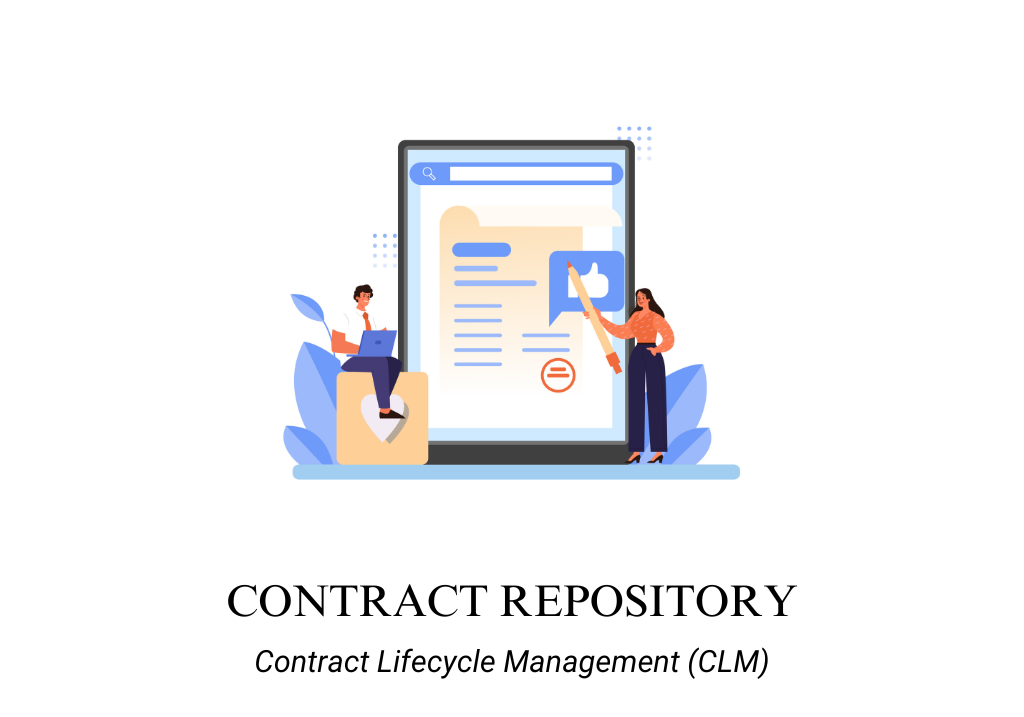Introduction
A Contract Repository is a key functionality within Contract Lifecycle Management (CLM) tools that provides a centralized, secure location for storing, organizing, and managing all contract documents. This functionality is essential for organizations to maintain control over their contract data, ensure easy access to important documents, and support compliance and risk management efforts.
By using a contract repository within a CLM tool, organizations can efficiently manage large volumes of contracts, streamline document retrieval, and ensure that all contract-related information is up-to-date and easily accessible. This centralized system helps in maintaining version control, enhances security, and facilitates better decision-making by providing a comprehensive view of all contractual obligations and terms.
Features of Contract Repository
Document Storage
Definition: Document storage is the capability of a contract repository to securely store all contract-related documents in a centralized location. This feature ensures that all contracts are preserved in a single, organized system, allowing for easy access, management, and archiving of documents.
Purpose: The purpose of document storage is to provide a secure, centralized location for all contract documents, reducing the risk of loss or misplacement. It enables organizations to manage their contracts more efficiently, ensuring that all relevant documents are stored in one place and can be easily accessed when needed.
Use Case: A manufacturing company uses the document storage feature in its CLM tool to store all supplier contracts. By centralizing these documents in one repository, the company ensures that procurement teams can quickly access current agreements, review terms, and manage renewals without the risk of missing or outdated documents.
Benefits:
- Ensures secure storage of all contract documents in a centralized location.
- Reduces the risk of lost or misplaced contracts by providing a structured storage system.
- Enhances document management by allowing easy access to and retrieval of contract files.
- Supports compliance and audit requirements by maintaining a comprehensive archive of all contract documents.
Multiple File Formats
Definition: Multiple file formats refer to the ability of a contract repository to store and manage contract documents in various file types, such as PDF, Word, Excel, and others. This feature ensures flexibility in handling different types of contract-related documents.
Purpose: The purpose of supporting multiple file formats is to accommodate the diverse needs of contract management, allowing users to store, view, and manage documents in the format that best suits their requirements. This feature ensures compatibility with different document types, enhancing the usability and versatility of the contract repository.
Use Case: A financial services firm legal team uses the multiple file formats feature in its CLM tool to store contracts in PDF format for final versions and Word format for drafts and ongoing edits. This flexibility allows the firm to maintain a clear distinction between finalized contracts and editable versions.
Benefits:
- Provides flexibility in storing and managing contract documents in various file formats.
- Enhances usability by accommodating different types of contract-related documents.
- Ensures compatibility with different document formats, improving access and management.
- Allows users to work with documents in their preferred format, streamlining the contract management process.
Categorization and Retrieval
Definition: Categorization and retrieval refer to the ability of a contract repository to organize contracts into categories and provide efficient search and retrieval capabilities. This feature helps users find specific contracts quickly by using predefined categories, tags, or search functions.
Purpose: The purpose of categorization and retrieval is to enhance the organization and accessibility of contract documents, making it easier for users to locate specific contracts when needed. By categorizing contracts and providing powerful search functions, a CLM tool ensures that users can quickly retrieve relevant documents, saving time and reducing administrative overhead.
Use Case: A healthcare provider’s legal team uses the categorization and retrieval feature in its CLM tool to organize contracts by type (e.g., vendor agreements, patient care contracts, insurance agreements) and by department. This system allows users to quickly find the contracts relevant to their needs, improving efficiency and reducing the time spent searching for documents.
Benefits:
- Improves document organization by allowing contracts to be categorized based on type, department, or other criteria.
- Enhances accessibility by providing efficient search and retrieval capabilities.
- Saves time and reduces administrative effort by enabling quick location of specific contracts.
- Supports compliance and risk management by ensuring easy access to relevant documents for audits or reviews.
Guide to find best Contract Lifecycle Management (CLM) for lawyers
CHECK OUT CLM TOOLS ON DIRECTORY OR CLICK HERE


